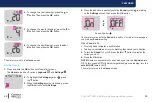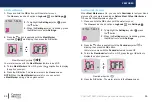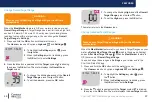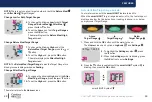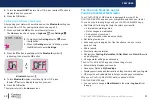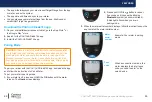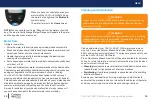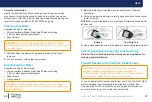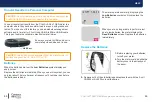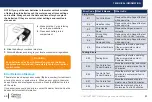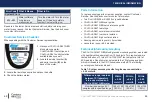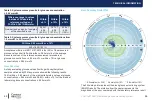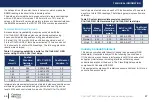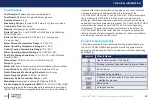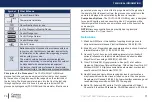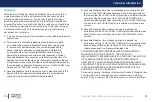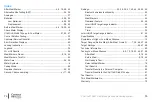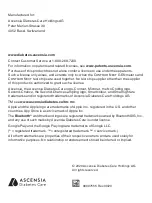
70
71
C
ontour
®
n
ext
GEN blood glucose monitoring system
TECHNICAL INFORMATION
Symbol
What It Means
Discard
Date:
Control Discard Date
Temperature limitations
Consult instructions for use
In Vitro Diagnostic Medical Device
Control Range Low
Control Range Normal
Control Range High
Shake 15 times
Batteries must be disposed of in accordance with laws
in your country. Contact your competent local authority
for information on the relevant laws regarding disposal
and recycling in your area.
The meter should be treated as contaminated and
disposed of according to local safety rules. It should not
be disposed of with waste electronic equipment.
Contact your health care professional or local waste
disposal authority for medical waste disposal guidelines.
Principles of the Procedure: The C
ontour
n
ext
GEN blood
glucose test is based on measurement of electrical current caused
by the reaction of the glucose with the reagents on the electrode of
the test strip. The blood sample is drawn into the tip of the test strip
through capillary action. Glucose in the sample reacts with FAD
glucose dehydrogenase (FAD-GDH) and the mediator. Electrons are
generated, producing a current that is proportional to the glucose in
the sample. After the reaction time, the glucose concentration in the
sample is displayed. No calculation by the user is required.
Comparison Options: The C
ontour
n
ext
GEN system is designed
for use with capillary and venous whole blood. Comparison with a
laboratory method must be done simultaneously with aliquots of the
same sample.
NOTE: Glucose concentrations drop rapidly due to glycolysis
(approximately 5%–7% per hour).
6
References
1. Wickham NWR, et al. Unreliability of capillary blood glucose in
peripheral vascular disease. Practical Diabetes. 1986;3(2):100.
2. Atkin SH, et al. Fingerstick glucose determination in shock. Annals of
Internal Medicine. 1991;114(12):1020-1024.
3. Desachy A, et al. Accuracy of bedside glucometry in critically ill
patients: influence of clinical characteristics and perfusion index.
Mayo Clinic Proceedings. 2008;83(4):400-405.
4. Cryer PE, Davis SN. Hypoglycemia. In: Kasper D, et al, editors.
Harrison’s Principles of Internal Medicine. 19th edition. New York, NY:
McGraw Hill; 2015. http://accessmedicine.mhmedical.com/content.
aspx?bookid=1130§ionid=79753191
5. Health Canada advisory. Blood lancing devices for personal use
may transmit blood-borne viruses if used on more than one person.
Government of Canada; 3/25/09. http://www.healthycanadians.gc.ca/
recall-alert-rappel-avis/hc-sc/2009/13372a-eng.php
6. Burtis CA, Ashwood ER, editors. Tietz Fundamentals of Clinical
Chemistry. 5th edition. Philadelphia, PA: WB Saunders Co; 2001;444.

